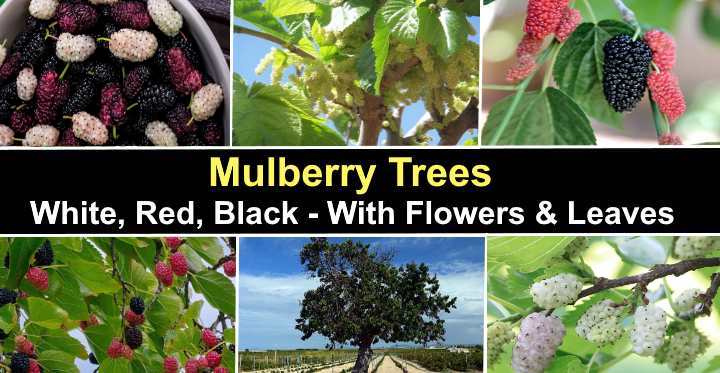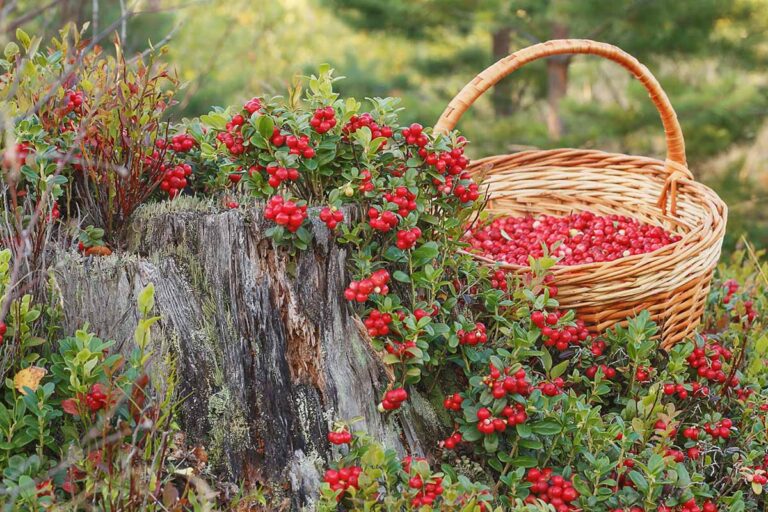Mulberry Tree: The Easiest Berries to Grow
Table of Contents
Understanding the Mulberry Tree: A Fruitful Addition to Your Garden
Mulberry trees, known for their sweet and succulent berries, can be a fruitful addition to any garden. These trees not only add beauty to your landscape but also provide you with a bountiful harvest of delicious and nutritious fruits. With their adaptability to different climates and soil types, mulberry trees are a versatile choice for gardeners.
One of the fascinating aspects of mulberry trees is their rich history. These trees have been cultivated for thousands of years, with records of their cultivation dating back to ancient civilizations in Asia. They were highly regarded for their berries, which were used for both culinary and medicinal purposes. Today, mulberries continue to be enjoyed for their unique flavor and numerous health benefits. So, why not consider adding a mulberry tree to your garden and indulge in the pleasures it offers?
The Fascinating History of Mulberry Trees and Their Berries
Mulberry trees have a rich and fascinating history dating back thousands of years. These trees, known for their sweet and flavorful berries, have been cultivated and cherished in various cultures around the world. In fact, mulberries hold a special place in ancient folklore, with stories and legends depicting them as fruits of abundance and vitality.
The origins of mulberry trees can be traced back to ancient China, where they were cultivated for their leaves, which served as food for silkworms. The cultivation of mulberries for silk production played a pivotal role in the Silk Road trade routes, contributing to the spread of the trees to other regions. Over time, mulberry trees found their way to Europe, North America, and other parts of the world, where they were appreciated not only for silkworm farming but also for their delicious berries.
Mulberry berries have been highly prized for their taste and nutritional value throughout history. In addition to their sweet and juicy flavor, mulberries are rich in essential vitamins, minerals, and antioxidants. They are known to contain high levels of vitamin C, iron, and calcium, making them a valuable addition to a healthy diet. Whether enjoyed fresh, dried, or incorporated into various culinary delights, mulberry berries add a burst of flavor and a dose of nutrition to any dish.
With their storied past and delectable berries, mulberry trees are undoubtedly a fascinating addition to any garden. In the following sections, we will explore the different varieties of mulberry trees, delve into their characteristics, and provide invaluable insights into their cultivation and care. So, if you’re ready to embark on a journey into the captivating world of mulberries, let’s dive in and discover the wonders of these remarkable trees.
Exploring the Different Varieties of Mulberry Trees and Their Characteristics
Mulberry trees come in various varieties, each with its own unique characteristics that make them suitable for different growing conditions and purposes. One popular variety is the Morus alba, also known as the White Mulberry. This tree is native to China and is well-loved for its sweet and flavorful berries. The Morus alba tree can reach a height of up to 30 feet and produces fruits that range in color from white to pink to black.
Another noteworthy variety is the Morus rubra, or the Red Mulberry. This native North American tree is known for its heart-shaped leaves and juicy, dark red to black berries. The Red Mulberry tree can grow up to 50 feet tall and can tolerate a wider range of soil conditions compared to other mulberry varieties.
The Morus nigra, or the Black Mulberry, is a favorite among fruit enthusiasts due to its rich, intense flavor and large berries. Originating from Persia, this tree can grow up to 40 feet tall and is known for its dark purple to black fruits. The Black Mulberry is often used in jams, desserts, and wines for its unique taste.
Lastly, the Morus macroura, or the Himalayan Mulberry, is a cold-hardy variety found in regions with high altitudes. This tree can reach heights of up to 35 feet and produces fruits that are red to black in color. The Himalayan Mulberry is favored for its adaptability to cooler climates and its resilience to disease.
Each mulberry variety offers its own set of advantages, and selecting the right one for your garden depends on factors such as climate, soil conditions, and intended use. Whether you prefer the sweetness of the White Mulberry, the versatility of the Red Mulberry, the richness of the Black Mulberry, or the resilience of the Himalayan Mulberry, there’s a mulberry variety out there that’s perfect for you. Stay tuned for the next section, where we delve into the ideal location for planting your mulberry tree.

Choosing the Ideal Location for Your Mulberry Tree
Choosing the ideal location for your mulberry tree is crucial to ensure its healthy growth and bountiful berry production. Mulberry trees thrive in full sun, so it is important to select a spot in your garden that receives at least six to eight hours of direct sunlight daily. This ample sunlight will provide the necessary energy for photosynthesis, promoting strong growth and sweet berry development.
In addition to sunlight, it is important to consider the soil conditions in your chosen location. Mulberry trees prefer well-drained soil that is rich in organic matter. They can tolerate a wide range of soil types, including sandy, loamy, and clay soils, as long as proper drainage is ensured. Avoid areas with heavy clay soil that tend to retain excess moisture, as this can lead to root rot and other fungal diseases.
When selecting the ideal location, take into account the mature size of the mulberry tree. These trees can reach heights of 30 feet or more and have broad canopies, so it is important to provide enough space for them to grow and spread their branches without overcrowding other plants or structures. Consider the proximity to buildings, power lines, and other trees to prevent potential issues in the future. By carefully selecting the location for your mulberry tree and providing it with adequate sunlight and well-drained soil, you are setting the stage for a thriving and fruitful addition to your garden.
Essential Soil Requirements for Healthy Mulberry Tree Growth
The soil requirements for healthy mulberry tree growth are crucial to ensure optimal development and fruit production. Mulberry trees thrive in well-drained soil that is rich in organic matter. Ideally, the soil should have a pH level ranging from 6.0 to 6.5, slightly acidic to neutral.
When selecting the location for your mulberry tree, it is important to assess the soil’s texture and composition. Sandy or clay soils can be improved by incorporating organic matter such as compost or well-rotted manure. This helps to enhance soil fertility and its ability to retain moisture, which is essential for the overall health of the tree.
Additionally, mulberry trees require adequate levels of essential nutrients for robust growth. Conducting a soil analysis is highly recommended to determine the nutrient content and any potential deficiencies. Based on the analysis results, appropriate fertilization can be carried out to ensure the tree’s nutritional needs are met.
Providing the appropriate soil conditions will lay the foundation for healthy mulberry tree growth, ensuring bountiful harvests in the years to come.

Watering Techniques and Frequency for Optimal Mulberry Berry Production
Proper watering techniques and frequency are crucial for achieving optimal mulberry berry production. Watering plays a significant role in the growth and development of mulberry trees, ensuring they receive the necessary hydration to produce a bountiful harvest.
When it comes to watering your mulberry tree, it is essential to strike a balance. Overwatering can lead to root rot and other detrimental conditions, while underwatering can hinder growth and reduce fruit quality. As a general guideline, aim to provide consistent moisture to the root zone without saturating the soil excessively.
To determine the appropriate watering frequency, factors such as climate, soil type, and tree age should be taken into consideration. Mulberry trees generally require more water during hot and dry periods, especially when they are younger and their root systems are still developing. As the tree matures, its deep-rooting system becomes more efficient at extracting moisture from the soil. Regularly monitoring the soil moisture levels and adjusting the frequency accordingly will help ensure your mulberry tree’s water needs are met.

Pruning Tips to Promote Better Mulberry Tree Growth and Berries
Pruning is an essential practice when it comes to promoting better growth and berry production in mulberry trees. By selectively removing certain branches and stems, you can help shape the tree, improve its overall health, and increase the quantity and quality of the berries it produces.
One key tip for pruning mulberry trees is to start early. It’s best to prune these trees while they are still dormant in late winter or early spring, before new growth begins. This allows the tree to direct its energy towards the development of new branches and berries later in the season. When pruning, focus on removing any dead, diseased, or damaged branches first, as these can impede the tree’s growth and compromise berry production. Additionally, thin out any overcrowded areas to improve air circulation and sunlight penetration, which are crucial for the tree’s overall health and berry development.
Protecting Your Mulberry Tree from Common Pests and Diseases
Mulberry trees are generally hardy and resistant to many common pests and diseases. However, like any other plant, they can still be vulnerable to certain issues that can affect their health and productivity. Protecting your mulberry tree from these common pests and diseases is essential to ensure its long-term growth and successful berry production.
One of the most common pests that can attack mulberry trees is the scale insect. These tiny pests attach themselves to the branches and leaves, sucking out the sap and weakening the tree. To prevent scale infestations, regularly inspect your tree for any signs of these pests. If you spot scales, you can manually remove them by scraping them off with a brush or cloth. Additionally, you can use horticultural oil or insecticidal soap to control the infestation. Applying these products according to the label instructions can help eliminate scale insects while minimizing harm to beneficial insects and the environment. Regularly monitoring your mulberry tree for scale insects and taking prompt action can prevent them from causing serious damage.
Another common pest that can cause problems for mulberry trees is the caterpillar. Caterpillars, such as the tent caterpillar and the silkmoth caterpillar, can defoliate the tree if left unchecked. To protect your mulberry tree from caterpillar damage, inspect the leaves regularly for signs of feeding or presence of eggs. Handpicking the caterpillars or using biological controls such as Bacillus thuringiensis (Bt) can help reduce their numbers. Applying a layer of floating row cover or fine mesh netting over the tree during times when caterpillars are most active can also provide effective protection. Maintaining good overall tree health by providing adequate water and nutrients can help minimize the risk of caterpillar infestations as well.
In addition to pests, mulberry trees can also be susceptible to certain diseases. One of the most common diseases that can affect mulberries is powdery mildew. This fungal disease appears as a white, powdery coating on the leaves and can inhibit photosynthesis and stunt the tree’s growth. To prevent powdery mildew, ensure that your mulberry tree is planted in a location with good air circulation. Pruning the tree to promote better airflow and removing any infected leaves or branches can help reduce the spread of the disease. Applying fungicides labeled for powdery mildew control, following the recommended dosage and application schedule, can also be effective in managing the disease. Regular monitoring and early intervention are key to preventing the spread of powdery mildew and preserving the health of your mulberry tree.
In conclusion, protecting your mulberry tree from common pests and diseases requires vigilance and proactive measures. Regular monitoring, targeted interventions, and good cultural practices can go a long way in ensuring the health and productivity of your mulberry tree. By promptly identifying and addressing any pest or disease issues, you can enjoy a thriving and fruitful mulberry tree in your garden.
Mulberry Tree Propagation: From Seeds to Seedlings
Propagation is an essential step in expanding your mulberry tree collection and ensuring a bountiful harvest of juicy berries. The process of propagating mulberry trees from seeds to seedlings is both fascinating and rewarding, allowing you to witness new life sprout from a tiny seed. Let’s delve into the details of mulberry tree propagation and explore the steps involved in successfully nurturing seedlings.
To begin, start by collecting ripe mulberries from a healthy and mature tree. Gently remove the seeds from the fruit, ensuring they are clean and free from any pulp or remaining fruit flesh. It’s worth noting that mulberry seeds have a short viability, so it’s best to sow them immediately or store them in a cool, dry place for a short period. Before sowing, you can also scarify the seed coat by gently nicking or scratching it to promote better germination.
Prepare a well-draining potting mix by combining equal parts of high-quality compost, perlite, and peat moss. Fill a seed tray or small pots with the potting mix, ensuring adequate drainage holes at the bottom. Moisten the mix, but avoid saturating it with water. Place the seeds about ¼ inch deep into the potting mix, spacing them at least two inches apart. Cover the seeds with a thin layer of the mix and lightly tamp it down. Finally, water the tray or pots gently, making sure not to disturb the seeds. In a few weeks, with proper care and patience, you will witness the remarkable emergence of mulberry seedlings, ready to embark on their journey toward becoming thriving trees.

The Best Time to Plant Your Mulberry Tree for Maximum Yield
The timing of planting your mulberry tree plays a crucial role in maximizing its yield. For optimal growth and fruit production, it is essential to choose the right time and season to plant your mulberry tree. Spring is generally considered the best time to plant mulberry trees, as the soil is warmer and provides favorable conditions for root establishment.
During the spring season, the soil temperature rises gradually, creating an ideal environment for the root system to develop and expand. This allows the tree to establish a strong foundation before the onset of harsh weather conditions. Additionally, planting your mulberry tree in spring ensures that it has ample time to grow and acclimate to its surroundings before the colder months arrive.
Planting your mulberry tree in spring also aligns with its natural growth cycle. Mulberry trees tend to be deciduous, shedding their leaves in the winter and entering a dormant phase. By planting in spring, you are giving your tree the opportunity to awaken from its dormancy and initiate new growth. This, in turn, enhances its chances of yielding a bountiful harvest in the coming seasons.
While spring is generally the optimal time for planting mulberry trees, it is important to consider your specific geographic location and climate conditions. It is advisable to consult with local gardening experts or agricultural extension services to determine the most suitable planting time based on your region. By carefully selecting the right time to plant your mulberry tree, you can ensure maximum yield and enjoy the abundant harvests that this fruit-bearing tree has to offer.
Mulberry Tree Care: Fertilization and Nutrient Requirements
Fertilization and proper nutrient management are essential for the healthy growth and development of your mulberry tree. By providing the right balance of nutrients, you can ensure that your tree thrives and produces an abundance of juicy berries. Understanding the fertilization requirements and nutrient needs of your mulberry tree will enable you to make informed choices and optimize its productivity.
Mulberry trees have specific nutrient requirements that must be met to ensure optimal growth. Nitrogen, phosphorus, and potassium are the primary macronutrients that are essential for mulberry trees. Nitrogen is crucial for leaf and stem growth, phosphorus promotes root development and overall plant health, while potassium aids in fruit development and strengthens the tree’s resistance to pests and diseases. Additionally, mulberry trees require smaller amounts of secondary nutrients like calcium, magnesium, and sulfur, as well as various micronutrients such as iron, manganese, and zinc, which are necessary for proper metabolic function. Providing these essential nutrients in the right quantities through fertilization will help your mulberry tree reach its fullest potential.
When it comes to fertilizing your mulberry tree, it is important to note that different stages of growth require varying nutrient ratios. For young mulberry trees, a balanced fertilizer with equal proportions of nitrogen, phosphorus, and potassium, such as a 10-10-10 formulation, will promote overall plant development. As the tree matures and begins fruiting, a fertilizer with a higher potassium content, such as a 6-12-12 or 8-16-16 blend, will support healthy fruit production. To determine specific nutrient deficiencies or excesses, a soil test can be conducted, which will provide you with valuable information for customizing your fertilization approach.
Certainly! Here’s a table summarizing the fertilization and nutrient requirements for mulberry trees:
| Aspect | Recommendation |
|---|---|
| Nutrient Balance | Mulberry trees require a balanced combination of nitrogen, phosphorus, and potassium to support their growth. A general-purpose, slow-release fertilizer is ideal, as it provides a steady supply of nutrients over several months. |
| Fertilization Timing | Apply fertilizer once per year, preferably in late winter. |
| Application Technique | Follow the instructions on the fertilizer packaging for proper application. Ensure even distribution around the tree’s root zone. |
| Additional Practices | Regular maintenance, including proper pruning, disease and pest control, and cleanup of fallen fruit, ensures the health and appearance of the mulberry tree. |
Remember to choose a suitable spot for planting your mulberry tree, provide adequate watering, and address any pest or disease issues promptly.
Harvesting Mulberries: When and How to Pick the Juiciest Berries
Harvesting mulberries at the right time is crucial to ensure you enjoy the juiciest and most flavorful berries. The timing of the harvest largely depends on the variety of mulberry tree you have in your garden. Generally, mulberries are ready to be picked when they are fully ripe and have gained their characteristic deep and vibrant color. Look out for berries that are plump, slightly soft to the touch, and easily detach from the tree with a gentle tug. Avoid picking mulberries that are still firm and under-ripe as they may not have developed their full sweetness and flavor.
To begin harvesting, gently hold the ripe berry between your thumb and forefinger and twist it in a slight twisting motion. The ripe mulberry should easily separate from the stem without leaving any resistance. It’s important to handle the berries with care to prevent damaging them and to avoid staining your hands. Wear gloves if you’re concerned about staining.
One effective technique for harvesting mulberries is to spread a clean sheet or tarp under the tree and gently shake the branches. This will cause ripe mulberries to fall onto the sheet, making it easier to collect them. Remember to check the sheet regularly and remove any leaves or debris to keep your harvest clean and free from contaminants.
Now that you know how to determine the right time for harvesting mulberries and the best techniques for collecting them, you can look forward to enjoying the sweet and succulent flavors of your homegrown harvest.
Storing and Preserving Mulberries for Year-round Enjoyment
Once you have harvested a bountiful supply of mulberries from your tree, you may be wondering how to store and preserve them for year-round enjoyment. Mulberries are incredibly versatile and can be used in a variety of delicious recipes, or even enjoyed on their own as a nutritious snack. By following a few simple techniques, you can ensure that your mulberries remain fresh and delicious for months to come.
One of the easiest ways to store mulberries is by freezing them. Begin by gently rinsing the berries under cool water to remove any dirt or debris. Carefully pat them dry with a paper towel to remove excess moisture. Next, spread the mulberries out on a baking sheet in a single layer, making sure they aren’t touching each other. Place the baking sheet in the freezer until the berries are completely frozen, which usually takes about two to three hours. Once frozen, transfer the mulberries to airtight containers or freezer bags. Label the containers with the date and store them in the freezer for up to six months. Frozen mulberries can be used in smoothies, baked goods, or thawed and enjoyed on their own.
Culinary Delights: Delicious Recipes Using Mulberries
With their sweet and juicy flavor, mulberries are a delightful addition to any culinary creation. These versatile berries can be used in a variety of dishes, from savory to sweet, adding a burst of color and taste. Whether you’re a fan of jams and jellies, refreshing smoothies, or decadent desserts, mulberries can elevate your recipes to new heights.
One popular way to enjoy the exquisite taste of mulberries is by incorporating them into pies and tarts. The vibrant red and purple hues of these berries make for a visually stunning and delectable treat. Simply combine fresh mulberries with a touch of sugar and a squeeze of lemon juice to enhance their natural flavors. Pour the mixture into a flaky pie crust, bake to perfection, and indulge in a slice of fruity bliss.
Another fantastic option is to create a mouthwatering mulberry sauce that can be used as a topping for pancakes, waffles, or even grilled meats. By gently cooking the berries with a little sugar and a splash of water, you can transform them into a rich and velvety sauce. The tangy sweetness of mulberries pairs beautifully with savory dishes, adding a surprising twist to your meals. So why not take your culinary skills to the next level by experimenting with these delicious recipes using mulberries? Your taste buds will thank you!
The Health Benefits of Mulberries: A Nutritional Powerhouse
Mulberries are often overlooked when it comes to superfoods, but these little berries pack a powerful nutritional punch. Bursting with vitamins, minerals, and antioxidants, mulberries can provide a wide range of health benefits for those who incorporate them into their diet.
One of the standout features of mulberries is their impressive antioxidant content. Antioxidants play a crucial role in fighting oxidative stress in the body, which can lead to chronic diseases and aging. Mulberries are rich in resveratrol, a potent antioxidant that has been shown to have anti-aging and anti-inflammatory properties. In fact, studies have suggested that resveratrol may help protect against various age-related diseases, including heart disease and neurodegenerative disorders. Additionally, mulberries contain anthocyanins, another group of antioxidants that are known for their ability to protect against free radicals and reduce the risk of chronic diseases, such as cancer and cardiovascular disease.
Certainly! Here’s a table highlighting the health benefits of mulberries, which are truly a nutritional powerhouse:
| Benefit | Description |
|---|---|
| Lower Cholesterol | Mulberries have been linked to reducing cholesterol levels. Elevated cholesterol is a risk factor for heart disease, and consuming mulberries may help manage it. |
| Improve Blood Sugar Control | For individuals with type 2 diabetes, maintaining stable blood sugar levels is crucial. Mulberries can contribute to better blood sugar control. |
| Reduce Cancer Risk | The antioxidants in mulberries help combat free radicals and may play a role in reducing cancer risk. |
Remember, mulberries are not only delicious but also packed with essential nutrients that promote overall health!
Mulberry Tree: A Sustainable and Low-maintenance Berry
Mulberry trees are an excellent choice for gardeners seeking sustainable and low-maintenance fruit trees. These trees, known for their delicious berries, require minimal care and can thrive in various climates and soil conditions. With their ability to adapt and survive without intensive cultivation, mulberry trees offer an ideal option for those looking to add a fruitful addition to their garden while minimizing the need for constant attention and maintenance.
Unlike other fruit trees that often demand regular pruning, fertilization, and disease control, mulberry trees have a remarkable ability to thrive with little intervention. They are known for their resilience and can withstand harsh conditions, including poor soil quality and drought. Additionally, their deep and extensive root systems enable them to efficiently access nutrients and water from the surrounding soil, reducing the need for frequent watering or fertilization. This makes mulberry trees an ideal choice for gardeners seeking a low-maintenance fruit tree that still yields a bountiful harvest of juicy and flavorful berries.
(Please note that the above paragraphs do not constitute a complete section of the article. They are only a short excerpt. The complete article will contain additional information and be structured accordingly.)
For better understanding watch the below video.
What is the best time to plant a mulberry tree?
The best time to plant a mulberry tree is in late winter or early spring, when the soil is moist and the tree can establish its roots before the growing season.
How often should I water my mulberry tree?
Mulberry trees generally require regular watering, especially during dry periods. Aim to water deeply once or twice a week, ensuring the soil is evenly moist but not waterlogged.
Can I grow a mulberry tree in a container?
Yes, it is possible to grow a mulberry tree in a container. However, make sure to choose a large and sturdy container, provide adequate drainage, and regularly monitor the tree’s water and nutrient needs.
Are mulberry trees prone to any specific pests or diseases?
Mulberry trees can be susceptible to pests such as aphids, scale, and whiteflies. They may also be affected by diseases like powdery mildew or root rot. Regular monitoring, proper sanitation, and, if necessary, the use of organic pest control methods can help prevent and manage these issues.
How do I propagate a mulberry tree?
Mulberry trees can be propagated from seeds, cuttings, or grafting. Seeds can be collected from ripe berries and sown in a well-draining soil mix. Cuttings can be taken from young stems and rooted in a suitable medium. Grafting involves joining a mulberry scion with a compatible rootstock.
Can I eat mulberries straight from the tree?
Yes, mulberries can be enjoyed straight from the tree. They are best when fully ripe, as they become sweeter and more flavorful.
Are there any culinary uses for mulberries?
Mulberries are highly versatile and can be used in various culinary creations. They can be used in desserts like pies, tarts, jams, and ice creams. They also pair well with savory dishes, such as salads, sauces, and marinades.
What are the health benefits of mulberries?
Mulberries are packed with nutrients and antioxidants. They are a good source of vitamins C and K, iron, and dietary fiber. Mulberries have been linked to improved digestion, immune system support, and heart health.
How do I store mulberries for long-term enjoyment?
To store mulberries, gently wash and dry them, then place them in a single layer in a container lined with paper towels. Store them in the refrigerator for up to a week or freeze them for long-term storage.
Can I grow mulberry trees in containers in colder climates?
Mulberry trees are generally hardy in USDA zones 5-9. If you live in a colder climate, you can grow a mulberry tree in a container and move it indoors during the winter months to protect it from frost and freezing temperatures.

Nicole Burke is a dynamic writer at SouthElMonteHydroponics, fueled by her passion for horticulture and environmental sustainability. Armed with a degree in Environmental Science from a renowned institution, Nicole’s expertise lies in hydroponic gardening, organic farming, and biodiversity conservation. Her insatiable curiosity and love for nature drive her to explore innovative techniques in hydroponics, seeking to revolutionize the way we grow crops in urban environments. Nicole’s writing reflects her deep commitment to promoting eco-conscious practices and fostering a deeper connection between humans and the natural world. Through her engaging storytelling, she inspires others to embrace sustainable living and harness the power of hydroponics for a greener future.







